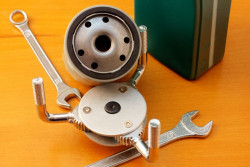Graph of Titanium Anodizing Voltage
Anodizing titanium anodizing voltage chart is an electrolytic finishing procedure that uses an electric current to modify the oxide layer on the surface of the titanium. The anode (positive electrode) of an electrolytic cell is formed by the titanium component, thus the name "anodize." Anodizing dates back to 1923 when it was first used to preserve British seaplane parts from salt-water corrosion. Anodizing methods are still used by aerospace firms to protect metals from the effects of age, wear, and corrosion.
The causes of titanium anodizing voltage
After a given number of stress cycles, these stress concentrations operate as favorable places for fatigue cracking, which can lead to catastrophic collapse. When it comes to durability, this hard coating can be a double-edged sword; if the part is likely to be exposed to high-temperature variations, anodizing could shatter (because of its hard outer shell, which lacks ductility). As a result, the planned usage of a part must be considered when determining whether or not anodization is appropriate.
Titanium anodizing equipment
Best Technology's competence in process design and development with anodizing equipment that is intended for safe usage with the essential chemistries to anodize titanium is relied upon by medical device makers.
Anodized titanium
Anodizing is an electrochemical procedure that manipulates the oxide layer of titanium by combining electricity and chemistry. The anode (positive electrode) titanium portion is submerged in an aqueous electrolyte solution such as disodium phosphate (TSP) or other salts. Water molecules undergo hydrolysis and split into hydrogen and oxygen when an electrical current is introduced.
Ways to anodize
It's worth spending some time researching before you start to see the titanium anodizing voltage chart to ensure that your pieces finish out perfectly. One piece of advice is to make sure your parts are completely clean before anodizing. Any skin oils, lubricants, or other contaminants left on the surface of your titanium after the anodizing process can and will create defects in your anodized finish. Below is a brief video that demonstrates the process. This technique does pose an electrocution risk, so it's important to understand how to reduce that risk.
Color change
It works like a thin film that, depending on its thickness, reflects a specific wavelength of light. The color of the titanium surface can be changed by adjusting the voltage applied during the anodization process. This enables titanium to be anodized in practically any color imaginable. Anodized titanium is not colorless. Without the use of patinas, dyes, or chemicals, anodizing titanium causes oxidation on the metal surface, bringing out the metal's vivid colors. The hue changes as the number of oxidation increases. The main concerns are how long the jewelry will last and whether the hues will fade.
Titanium anodizing for jewelry
After eight years of anodizing titanium, the anodized surface is extremely stable, and neither indoor nor outdoor elements will harm the quality. However, similar to a polishing wheel, constant contact with the body over time may wear out the anodized region. Any technique that alters the inherent color of the metal, such as oxidized sterling silver or gold-plated metal, has this difficulty. Rings are the most dangerous since they are constantly in contact with the fingers. Other types of jewelry, such as pendants and earrings, are less affected.
Conclusion
Titanium anodizing is a method of artificially growing titanium oxides on top of a titanium base metal using electrolysis. It works like a thin sheet that, depending on its thickness, reflects a certain wavelength of light. In a nutshell, this article has a titanium anodizing voltage chart which will help you know the outcome.




